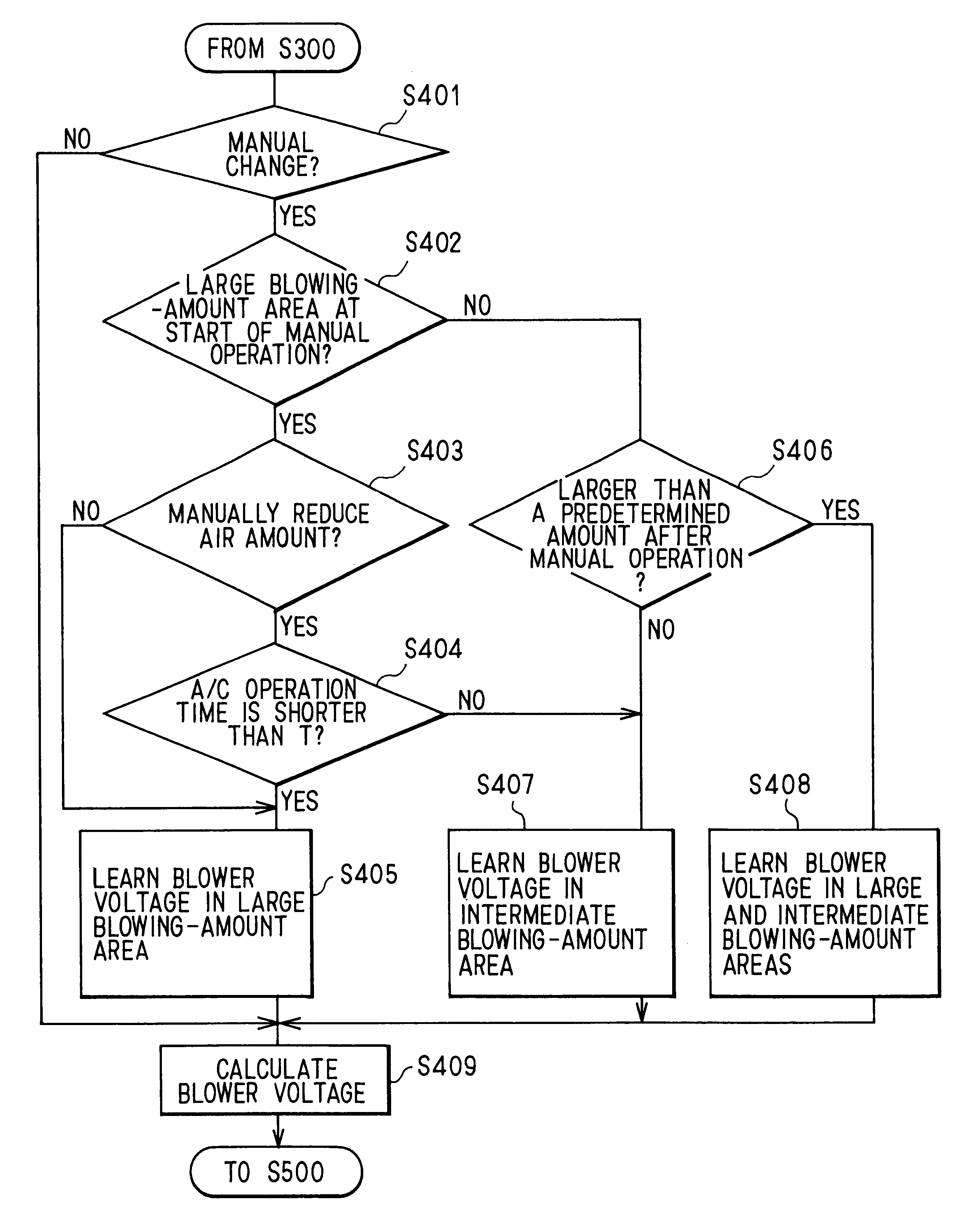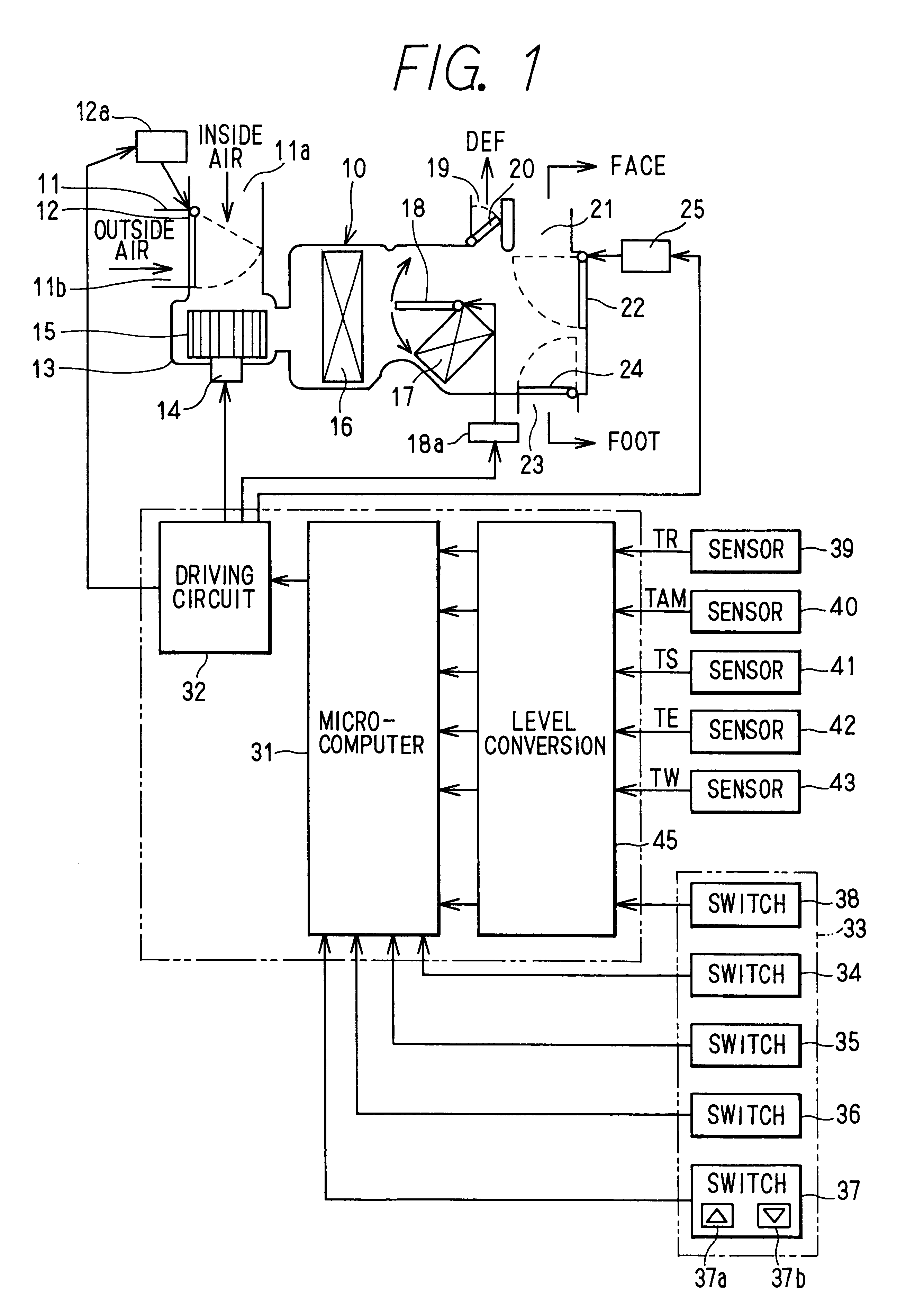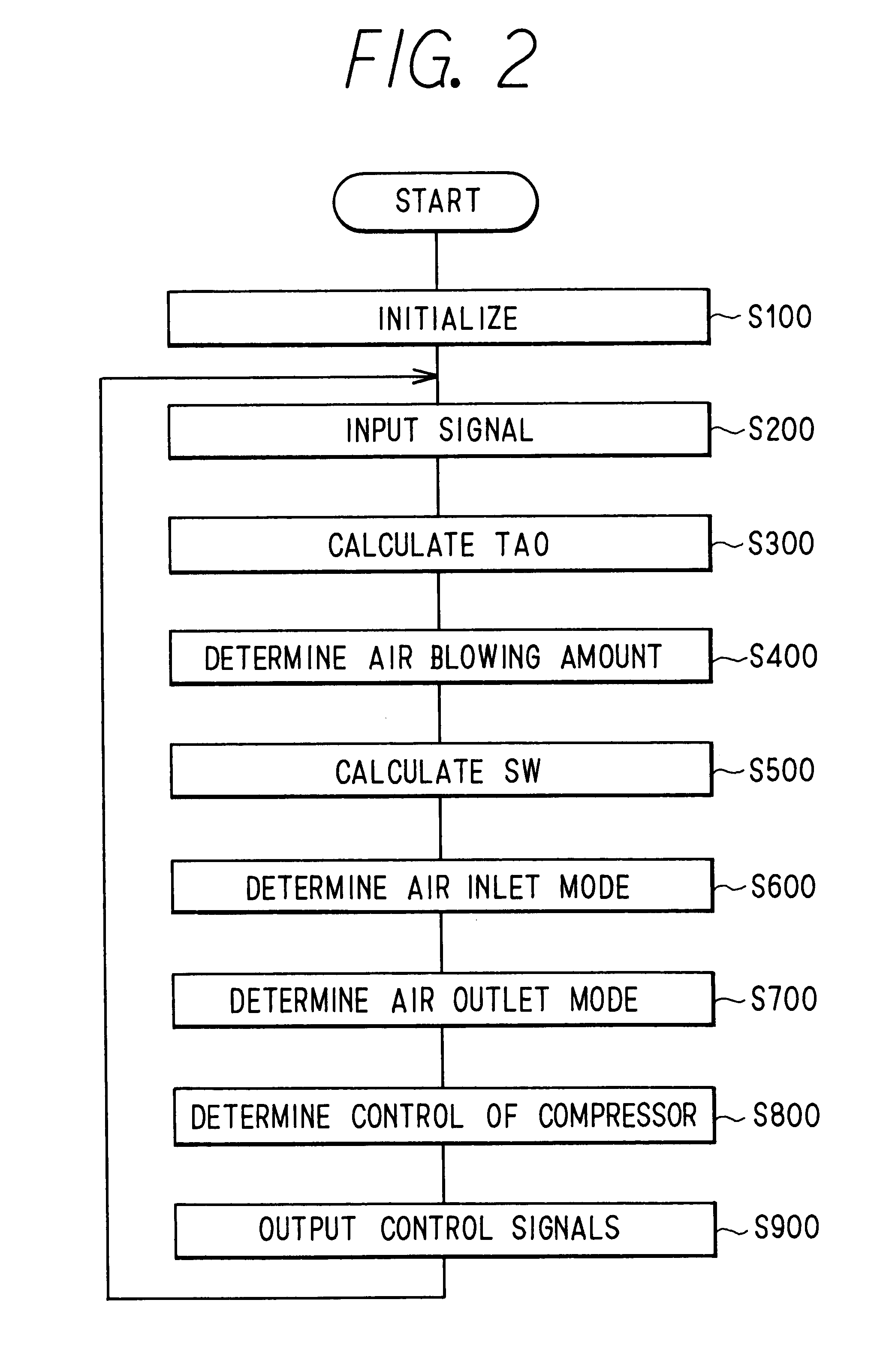Automatic air conditioner having learning function and control method of control system
a technology of automatic air conditioner and function, which is applied in the field of vehicle air conditioner, can solve the problems inability to learn the function of manual adjustment of air blowing amount, and inability to meet the passenger's request for reducing air blowing amoun
- Summary
- Abstract
- Description
- Claims
- Application Information
AI Technical Summary
Benefits of technology
Problems solved by technology
Method used
Image
Examples
first embodiment
(First Embodiment)
A vehicle air conditioner of FIG. 1 according to the first embodiment automatically controls an air blowing temperature, an air blowing amount, an air inlet mode (air introduction mode), an air outlet mode and the like by automatically controlling air-conditioning control components based on stored control characteristics. Further, the vehicle air conditioner corrects the stored control characteristics for automatic control, based on a passenger's introduction such as manual operation of a passenger. The vehicle air conditioner includes an air conditioning unit 10 used as an interior unit, an inside-outside air switching box 11 used as an air-inlet mode switching device at the most upstream air side of the air conditioning unit 10, and the like. The air conditioning unit 10 is disposed inside a passenger compartment of the vehicle. The switching box 11 includes an outside introduction port 11b, an inside air introduction port 11a and an inside-outside air switching...
second embodiment
(Second Embodiment)
In the above-described first embodiment, it is determined whether or not the passed time after the start of the automatic air-conditioning operation is equal to or shorter than the predetermined time T seconds at step S404 shown in FIG. 3, and the correction method of the control pattern is changed in accordance with the passed time. However, in the second embodiment shown in FIG. 6, the correction method of the control pattern is changed in accordance with the target blowing temperature TAO at the manual operation of the air blowing amount in place of the passed time at step S404 shown in FIG. 3. Specifically, when the target blowing temperature TAO, at the manual operation for reducing the air blowing amount, is equal to or lower than .alpha. or is equal to or higher than .beta. in FIG. 6, the air blowing amount in the large blowing amount area is reduced as shown in FIG. 4A. When the target blowing temperature TAO, at the manual operation for reducing the air b...
third embodiment
(Third Embodiment)
In the above-described second embodiment, the correction method is changed in accordance with the target blowing temperature TAO at the blowing-amount manual operation. However, in the third embodiment shown in FIG. 7, the correction method is changed in accordance with a difference of the target blowing temperature TAO. Here, the difference is between the target blowing temperature TAO at the switching point E, where the air blowing amount is started to be reduced from the large blowing amount area to the intermediate blowing amount area, and the target blowing temperature TAO at the blowing-amount manual operation. Specifically, when the air blowing amount is manually reduced in the low temperature area of the target blowing temperature TAO lower than the switching point E by a temperature difference larger than .gamma., the air blowing amount in the large blowing amount area is reduced as shown in FIG. 4A. When the air blowing amount is manually reduced in the l...
PUM
 Login to View More
Login to View More Abstract
Description
Claims
Application Information
 Login to View More
Login to View More - R&D
- Intellectual Property
- Life Sciences
- Materials
- Tech Scout
- Unparalleled Data Quality
- Higher Quality Content
- 60% Fewer Hallucinations
Browse by: Latest US Patents, China's latest patents, Technical Efficacy Thesaurus, Application Domain, Technology Topic, Popular Technical Reports.
© 2025 PatSnap. All rights reserved.Legal|Privacy policy|Modern Slavery Act Transparency Statement|Sitemap|About US| Contact US: help@patsnap.com



